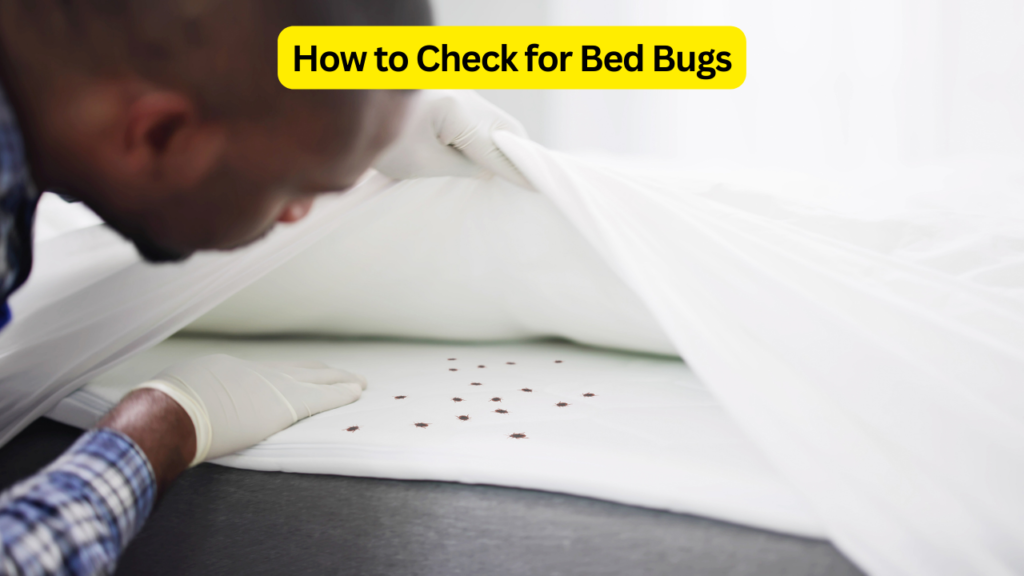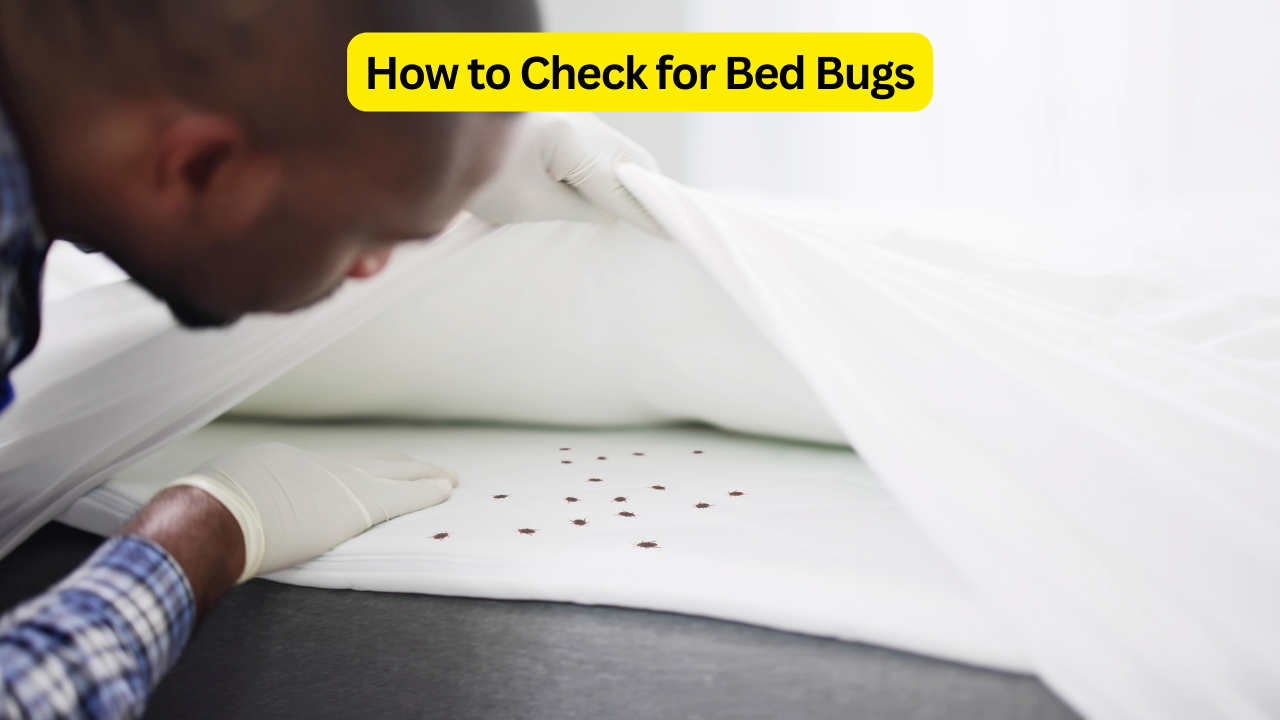Dealing with bed bugs can be a nightmare for homeowners. These tiny, elusive pests can cause significant discomfort and stress, not to mention the challenge of getting rid of them. Understanding how to check for bed bugs is the first step in addressing a potential infestation. This guide provides detailed, step-by-step instructions on how to inspect your home for these unwelcome guests.
Bed bugs are small, nocturnal insects that feed on human blood. Despite their tiny size, they can cause big problems, including itchy bites and allergic reactions. Detecting bed bugs early is crucial to preventing a minor problem from turning into a major infestation. In this article, we’ll explore effective methods to check for bed bugs, signs of their presence, and preventive measures to keep them at bay.
Understanding Bed Bugs
Bed bugs are wingless insects that belong to the family Cimicidae. They are oval-shaped, reddish-brown, and roughly the size of an apple seed when fully grown. Bed bugs are known for their ability to hide in the smallest of crevices and their resilience to many common pest control methods.
Signs of Bed Bug Infestation
Identifying the presence of bed bugs involves recognizing several key signs:
- Bite Marks: Small, red, and itchy welts on the skin, usually arranged in a line or cluster.
- Blood Stains: Tiny blood spots on your sheets or pillowcases.
- Fecal Spots: Dark, rusty-colored spots on mattresses, bed linens, and walls.
- Eggs and Shells: Tiny, pale yellow eggs and shed skins from nymphs.
- Live Bugs: Actual sightings of live bed bugs, especially in the seams of mattresses and furniture.
Inspecting Your Sleeping Area
Since bed bugs are most active at night and prefer to be near their food source (you), the bedroom is the most logical place to start your inspection. Here’s a systematic approach to checking your bed and sleeping area:
Check the Mattress and Box Spring
- Remove Bedding: Strip all sheets, pillowcases, and comforters from your bed.
- Inspect Seams and Edges: Use a flashlight to closely examine the seams, tufts, and edges of the mattress. Pay special attention to the corners.
- Check Box Spring: Bed bugs often hide in the box spring. Carefully lift it and inspect all sides, especially along the seams and cracks.
- Look Under the Bed: Bed bugs can hide in the bed frame, headboard, and footboard. Use a flashlight to check any joints and crevices.
Examine Nearby Furniture
Bed bugs are not confined to the bed. They can spread to nearby furniture such as nightstands, dressers, and even behind picture frames.
- Nightstands and Dressers: Empty drawers and inspect inside, focusing on joints and corners.
- Picture Frames: Remove frames from the wall and check behind them.
- Upholstered Furniture: Inspect any chairs or sofas near your bed, focusing on seams and cushions.
Checking Other Rooms
While the bedroom is the primary focus, bed bugs can infest other areas of your home. Expanding your inspection to additional rooms can prevent a wider spread.
Living Room
- Sofas and Chairs: Inspect the upholstered furniture’s seams, cushions, and frames.
- Carpets and Rugs: Check the edges and under any rugs or carpets for signs of bed bugs.
Other Bedrooms
- Guest Rooms: Bed bugs can hide in less frequently used rooms. Repeat the bedroom inspection process in all sleeping areas.
- Closets: Check the floor and any stored items, especially luggage.
Using Detection Tools

To enhance your inspection, consider using some of these helpful tools:
Flashlight
A good flashlight is essential for spotting bed bugs in dark crevices and tight spaces.
Magnifying Glass
A magnifying glass can help you spot smaller signs of bed bugs, such as eggs and nymphs.
Bed Bug Interceptors
These are small plastic dishes that you place under the legs of your bed. They trap bed bugs trying to climb up or down, providing both a detection and monitoring tool.
Sticky Tape
Double-sided sticky tape can be used around bed posts and furniture to trap bed bugs and prevent them from moving freely.
Preventive Measures
Preventing a bed bug infestation is easier than dealing with one. Here are some tips to keep your home bed bug-free:
Regular Inspections
Regularly inspect your home, especially after traveling or having guests stay over.
Protective Covers
Use protective covers for mattresses and box springs to reduce hiding places for bed bugs.
Declutter
Reduce clutter in your home to eliminate potential hiding spots for bed bugs.
Careful Travel Practices
Inspect hotel rooms for signs of bed bugs and avoid placing luggage on the bed. Use luggage racks instead.
Professional Help
If you suspect a bed bug infestation, it’s often best to contact a professional pest control service. They have the expertise and tools to eliminate bed bugs effectively.
FAQs
What are the first signs of bed bugs?
The first signs of bed bugs often include small, itchy bites on the skin, tiny blood spots on bedding, and dark fecal spots on mattresses and walls.
How do bed bugs enter a home?
Bed bugs can enter a home through luggage, clothing, used furniture, and other items brought from infested areas.
Can bed bugs live in carpets?
Yes, bed bugs can live in carpets, especially along the edges and in any cracks or crevices.
How often should I inspect for bed bugs?
It’s a good idea to inspect for bed bugs regularly, especially after traveling or having guests. Monthly inspections can help catch an infestation early.
Are bed bugs only found in beds?
No, bed bugs can be found in many areas of the home, including furniture, carpets, and behind picture frames.
Can I get rid of bed bugs on my own?
While minor infestations can sometimes be managed with thorough cleaning and bed bug sprays, professional pest control services are often necessary for complete eradication.
Conclusion
Checking for bed bugs is a critical task for maintaining a healthy, comfortable living environment. By following the steps outlined in this guide, you can effectively identify and address any bed bug problems before they escalate. Regular inspections, preventive measures, and prompt action are key to keeping your home bed bug-free. If you find yourself dealing with a significant infestation, don’t hesitate to seek professional help to ensure these persistent pests are eliminated.

4 thoughts on “How to Check for Bed Bugs: Expert Comprehensive Guide”